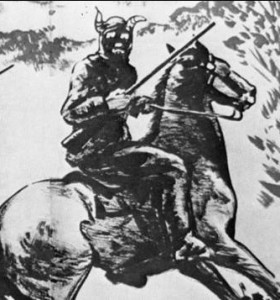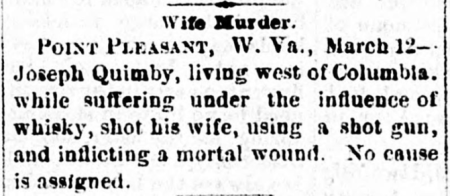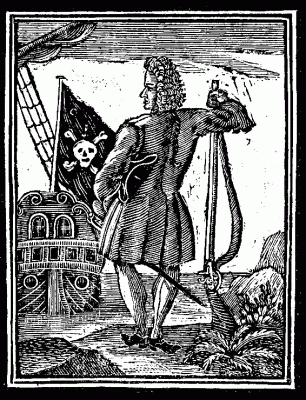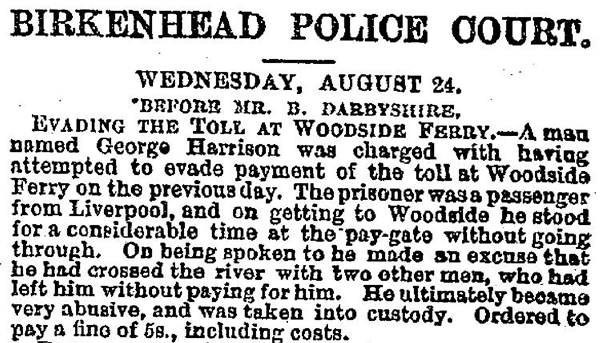
The Bald Knobbers were a vigilante gang active in southern Missouri during the 1880s. The group came together in 1883 to deal with bandits and cross-border raiders plaguing local farmers. By 1885, the Bald Knobbers had grown in size and become troublemakers as much as trouble-stoppers. They also adopted a crude but intimidating uniform: a black hood with eye and mouth holes removed and the corners tied to resemble ears or horns.
The lawless behaviour of the Bald Knobbers led to the formation of the Anti-Bald Knobbers, in effect a vigilante group formed to combat another vigilante group. In March 1887 Bald Knobbers in Christian County shot up the home of an opponent, killing him and another man. Three Bald Knobbers – Dave Walker, his son William and Deacon Matthews – were arrested, tried and sentenced to death.
Their hanging took place in Ozark, Missouri on May 10th 1889 but was appallingly handled:
“The trap was sprung at 9.53 this morning. Matthews went down while uttering a prayer. The stretch of the rope was so great as to let all the doomed men fall to the ground. The rope finally broke and William Walker fell loose and lay on the ground struggling and groaning. He was taken up by the sheriff and his deputies and again placed on the scaffold. Dave Walker was swung up and died in 15 minutes. John Matthews lived about 13 minutes and died with his feet on the ground. The scene was horrible in the extreme. William Walker was lifted almost insensible, helpless and groaning on the scaffold and the rope was again adjusted around his neck. The trap was again sprung and this time the poor wretch came to a sudden stop with his feet full 30 inches above the ground. He died without a struggle.”
A gunfight between Bald Knobbers, Anti-Bald Knobbers and lawmen in July 1889 ended most of the Knobber violence in Missouri. The Bald Knobbers later featured in the popular 1907 novel The Shepherd of the Hills and two film adaptations, including a 1941 release starring John Wayne.
Source: The Sedalia Weekly Bazoo (Missouri), May 14th 1889. Content on this page is © Alpha History 2019-23. Content may not be republished without our express permission. For more information please refer to our Terms of Use or contact Alpha History.




